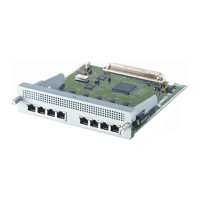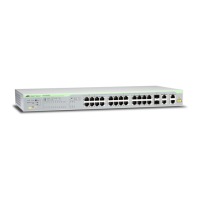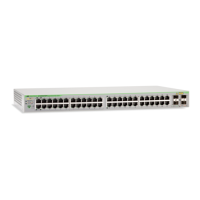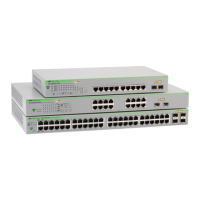Traffic Management Throughout the Network Introduction
6-5
Software Reference for SwitchBlade x3100 Series Switches (Access and Security)
Note: Random Early Discard (RED) is not supported.
As the traffic passes through the queues, they are then scheduled for output. The common type of scheduler
is the Strict Priority (SP) scheduler, which selects a packet at the head of the highest priority queue (usually
allows no delay) and continues to select packets in that queue until it is empty; only then are packets chosen
from other queues. When a network has little or no congestion, all queues are scheduled equally. However, in a
heavily congested network, the highest priority queue may always have packets, and so the lower priority
queues are never scheduled and are therefore blocked.
The Weighted Round Robin (WRR) scheduler associates an additional weight to each queue, so that the
scheduler spends at least some time (although limited because of its lower weighting) with the other queues.
All of these functions together help ensure that traffic is classified/filtered and then metered to ensure that its
bandwidth does not exceed the SLA. However, this does not guarantee that all network resources are available
so that the bandwidth agreed to can be propagated through the network. Call Admission Control (CAC) is
an accounting algorithm that qualifies the available network resources against the SLA. Within a network device,
the CFC function balances downstream congestion and full utilization of available bandwidth. CAC takes into
account all factors and calculates an equivalent maximum bandwidth.
Finally, the provider should use the performance monitoring tools provided by the system to verify the levels of
service that have been negotiated. These tools measure packet loss, delay, jitter, availability, and failure recovery
time.
Note: Weighted round robin (WRR) scheduling is not supported.
6.2.3 Traffic Management Throughout the Network
Since the traffic flows occur throughout the network, each device must give these flows the same treatment as
they pass through the device. For Rapier devices, there are QoS features that can be configured so that traffic
prioritization is similar to what is configured for the SBx3112. For relevant documentation, go to http://
www.alliedTelesis.co.nz/documentation.
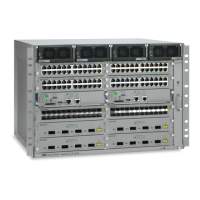
